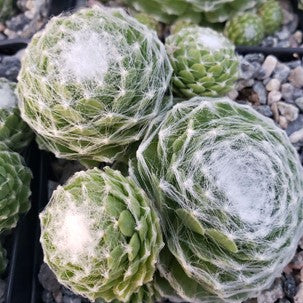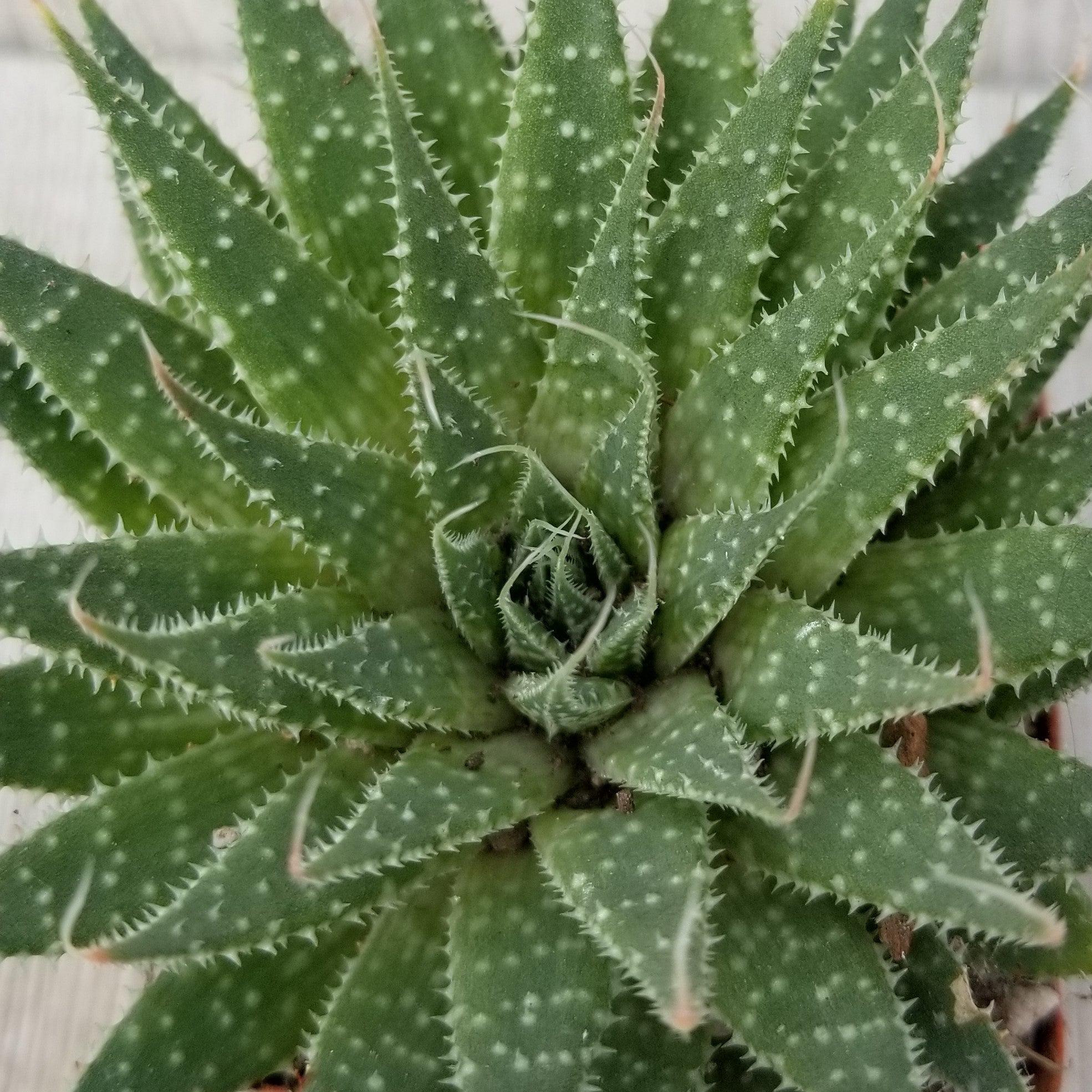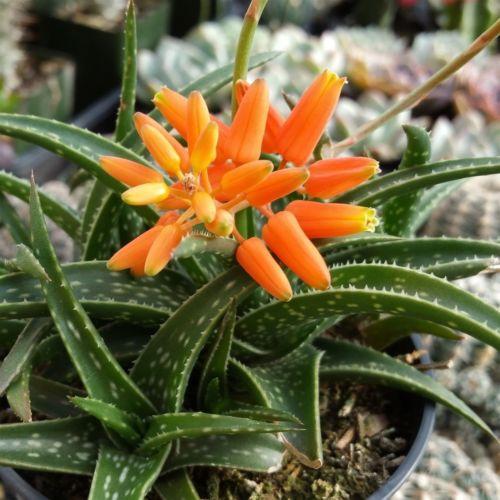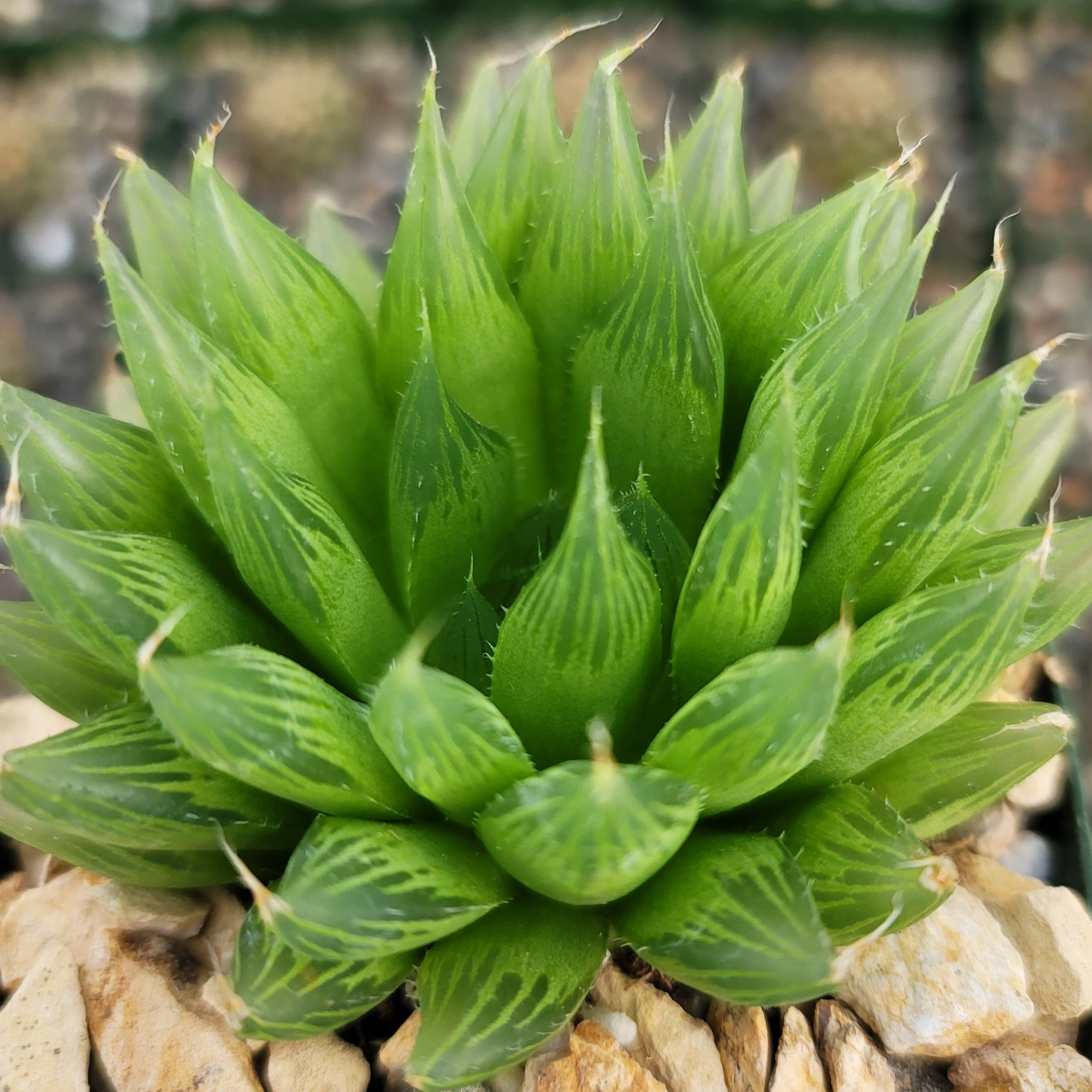Growing Sempervivum Cobweb Succulents
Updated: January 28, 2025

Sempervivum Cobweb is an extraordinary succulent that looks very similar to other varieties of hens and chicks succulents- thin fiber-like strands at the tips of the leaves are the only difference. These fibers look like spiderwebs due to which it is also commonly known as Cobweb Houseleek. Usually, plants with such characteristics would appear to be difficult to maintain. However, if you use the right tools, you can easily take care of them just like any other type of Sempervivum arachnoideum.
This article will discuss how to grow and care for Sempervivum cobweb hens and chicks plants.
Characteristics of Cobweb Houseleek
Cobweb Houseleek is a must-have succulent that belongs to the Crassulaceae family. It is local to the Alps and it’s habitual to low temperatures and climates. Furthermore, its hardiness lets it easily adapt to numerous environments. It goes dormant in the colder months and you need to follow regular Sempervivum arachnoideum care tips during its dormancy too.
This pretty plant produces a mat of close-fitting rosettes of reddish or green-colored leaves that are accentuated with white spider web-like hairs at the tips. You can expect its height to be up to 3 inches or 7.5 cm. Rosettes can have a diameter of up to 3 cm (1.2 inches) with a 30 cm of spread.
You may definitely love to add this Sempervivum variety to your garden but make sure you keep it away from pets and children owing to its toxicity. Although its ingestion does not indicate death, it is always better to be on the safer side. It is also suggested to wear gardening gloves before touching this succulent as it might cause skin irritation.
Growing Sempervivum Cobweb
Sempervivum arachnoideum cobweb is comparatively easy to grow succulent in a pot, container, rock garden, wall crevice, or scree bed. It is a perfect plant, as it quickly begins making clusters of beautiful rosettes, occupying the whole area nicely. Being a monocarpic succulent, the rosette mother called “hen” dies after blooming but produces numerous offsets called “chicks” before dying.
It blooms once every 3 years; this plant survives for three years before producing flowers. The pink-colored Cobweb houseleek flowers make this succulent even more decorative for your outdoor space.
Cobweb Houseleek Care Guide
Follow the below Sempervivum arachnoideum care instructions to allow it to thrive happily and bloom beautifully.
-
Light
Cobweb hens and chicks light requirements range from full sunlight to light shade. It can ideally survive under different levels of light. In short, it is not too particular about sun exposure.
When you grow Cobweb Sempervivum alone, place it in full sun, and avoid exposing it to direct sunlight to prevent the leaves from burning & turning yellow.
-
Water
During the active growing period, it is best to follow a regular watering regime. Although Sempervivum arachnoideum cobweb does not require too much water to stay alive, you can water it when the soil seems dry using either the bottom watering method or watering can. Once you water this plant, allow the excess liquid to drain properly.
Reduce the watering frequency during its dormancy period that is the winter season.
-
Soil
Your Cobweb houseleek will grow happily in fast-draining soil. You can make use of a succulent potting mix that has a high drainage capacity. Furthermore, if you want to improve the drainage capacity of your soil mix, add peat to it. If enough drainage is not provided to it, it will die due to root rot.
-
Temperature
The Cobweb hens and chicks temperature tolerance is from 65 to 75°F which means they will feel comfortable in the average household environment. With the USDA hardiness level of 5a to 8b, these succulents can adjust in many locations and climates.

-
Propagation
For Cobweb houseleek propagation, you can simply take off one of the offsets (chicks) from the other parts of the succulent. To ideally do so, you need to cut off the complete rosette with a pair of scissors, and take out any roots that have started to grow from that specific rosette. Once the cutting has been obtained, plant it in a separate pot and let it propagate.
-
Fertilizer
In most scenarios, there is no need to add fertilizer to this succulent. Even if you still wish to fertilize it, make use of a diluted succulent fertilizer during the growing months.
-
Potting & Repotting
When it comes to choosing the right pot for your Cobweb houseleek plant, it is necessary to pick one made from porous materials such as ceramic, terracotta, or concrete. Such pots have good drainage and prevent Cobweb houseleek from dying. Additionally, choose a succulent pot that is 5 to 10% larger than the plant itself.
You should do repotting of Sempervivum Cobweb during the summer season so it can comfortably adapt to the new environment.
-
Pruning
Owing to their compact figure, you may not need to prune this succulent often. Also, pruning will also damage the white fibers on the tips of the leaves, hampering their overall beauty. However, if it’s kept in partial sun and has become leggy because of irregular lighting then trim the leggy parts using scissors.
Uses of Sempervivum Cobweb Hens and Chicks
The Cobweb variety of hens and chicks succulents has multiple skin benefits and uses. You can crush its leaves or extract its juice to treat wounds, boils, etc. If you are suffering from toothaches, chew some leaves of this plant. In the summer season, you can use its pulp as a cooling & hydrating face mask.
So, this is how you grow Sempervivum Cobweb hens and chicks. Following the above care guide, you will witness extraordinary beauty in your garden or patio. Plus, it offers skin benefits so you have got a quick home remedy for many skin-related issues. Wait no more, and get it online today from Planet Desert!
























